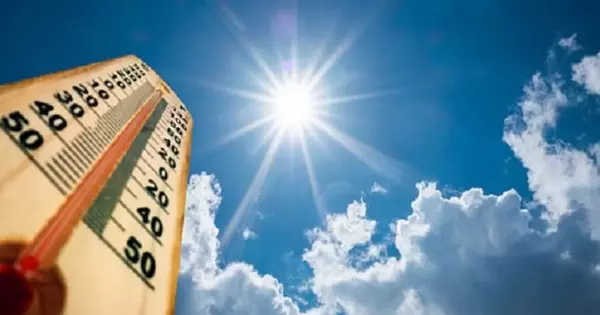Humidity can increase heat risk in urban climates. Humidity is a measure of the amount of water vapor in the air, and when humidity is high, the body’s ability to cool itself through sweating is reduced. This can make hot weather feel more uncomfortable and increase the risk of heat-related illnesses.
A new study used observational data and an urban climate model to calculate the combined effect of temperature and humidity on urban heat stress. Researchers discovered that the heat stress burden is affected by local climate, and that a humidifying effect can cancel out the cooling benefits provided by trees and vegetation.
As temperatures around the world reach record highs, urban areas are experiencing increased heat stress. Cities are generally warmer and drier than rural areas. However, there is an additional complicating factor in the Global South: urban humid heat.
A new study published in Nature by Yale School of the Environment scientists looked at the combined effect of temperature and humidity on urban heat stress using observational data and an urban climate model calculation. Researchers discovered that the heat stress burden is affected by local climate, and that a humidifying effect can cancel out the cooling benefits provided by trees and vegetation.
A widely held belief is that urban residents are subjected to a greater heat burden than the general population as a result of the urban heat island phenomenon. This view is incomplete because it ignores another common urban microclimate phenomenon known as the urban dry island, which occurs when urban land is less humid than surrounding rural land.
Xuhui Lee
“A widely held belief is that urban residents are subjected to a greater heat burden than the general population as a result of the urban heat island phenomenon. This view is incomplete because it ignores another common urban microclimate phenomenon known as the urban dry island, which occurs when urban land is less humid than surrounding rural land,” says Xuhui Lee, Sara Shallenberger Brown Professor of Meteorology and study director. “Urban residents are less heat-stressed than rural residents in dry, temperate, and boreal climates.” In the humid Global South, however, the urban heat island predominates over the urban dry island, resulting in two to six additional dangerous heat stress days per summer.”
The study’s lead authors, Lee and YSE doctoral student Keer Zhang, say they were motivated to investigate the issue for several reasons: A large proportion of the global population lives in cities; many people in informal urban settlements lack access to air conditioning; and the problem will worsen as temperatures rise and more people move to cities. According to the World Economic Forum, approximately 4.3 billion people, or 55% of the world’s population, live in cities, with that figure expected to rise to 80% by 2050.

In contrast to other heat indexes, which weight temperature more heavily than humidity, the researchers developed a theoretical framework on how urban land modifies both air temperature and air humidity and demonstrated that these two effects have equal weight in heat stress as measured by the wet-bulb temperature. To measure humid heat, wet-bulb temperature combines dry air temperature and humidity. The study’s findings, the authors note, raise important questions.
“Green vegetation can lower air temperature via water evaporation, but it can also increase heat burden because of air humidity. The question then is to what extent this humidifying effect erases the cooling benefit arising from temperature reduction. We hope to answer this question in a follow-up study, where we are comparing observations of the wet-bulb temperature in urban greenspaces (with dense tree cover) and those in built-up neighborhoods,” Lee says.
Zhang hopes that the study will lead to more research on how cities can reduce heat stress.
“Our diagnostic analysis of the urban wet-bulb island discovered that improving urban convection efficiency (the efficiency of dissipating heat and water) and reducing heat storage at night can reduce both daytime and nighttime urban humid heat.” “We hope that our work will spur more research into optimizing urban shapes and materials for improved thermal comfort,” she says.














